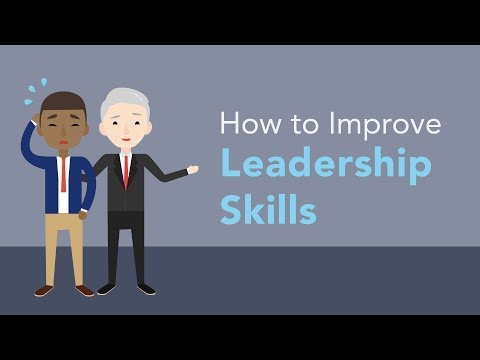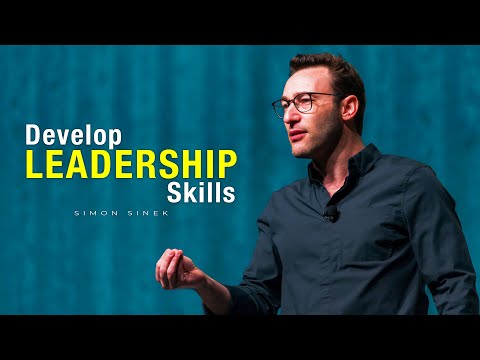If you’re seeking leadership development tips, you’re in the right place. Welcome to a journey of transformation and growth that will not just fuel your career but enable you to create a lasting impact in the business world. Aspiring speakers and entrepreneurs, fasten your seatbelts! We’re diving deep into the Five Cs of Leadership: Communication, Creativity, Commitment to Integrity, Continuous Learning, and Collaborative Leadership. Are you ready to master these pillars and stand out as a distinguished leader? Let’s get started!

Effective Communication: The Cornerstone of Leadership
Clear and effective communication is the bedrock of successful leadership. It’s no coincidence that prominent leaders, like Indra Nooyi, the former CEO of PepsiCo, champion communication as a critical skill. Businesses thrive when leaders prioritize clarity, transparency, and open dialogue, creating an environment where team members feel valued and understood.
Leaders can improve their communication skills by:
Effective communication doesn’t only foster a cohesive team environment; it also paves the way for successful personal branding strategies. For tips on building a powerful speaking brand, check out my insights on How To build a speaking brand.

Cultivating Creativity: Fueling Innovation in Leadership
Creativity isn’t just a trait of artists; it’s a core leadership quality. Consider Elon Musk, who tirelessly defies the confines of the conventional with SpaceX and Tesla. His inventive approach drives innovation, compelling teams to exceed boundaries.
Foster creativity by:
Real-world success stories, like Musk’s, motivate us to leverage creativity. Want to infuse this creative zest into your speaking career? Dive into our comprehensive guide on personal branding Strategies.

| Framework/Model | Key Elements | Description | Application |
| Five C’s | Character, Consistency, Commitment, Communication, Creativity | Indicators of strong leadership identified by psychology research. | Focus on developing these traits to enhance leadership effectiveness. |
| Five P’s of Leadership | Personal Attributes, Position, Purpose, Procedure/Process, Product | Framework to evaluate a leader’s performance. | Assess leaders based on these elements to determine their overall effectiveness and areas for improvement. |
| 5 E Model of Leadership | Envision, Engage, Energize, Enable, Execute | Five steps that leaders should take to bring their best selves to work and make impactful contributions. | Use these steps to foster an empowering and dynamic leadership style that motivates and drives success. |
| Seven C’s | Competence, Creativity, Courage, Communication, Coaching, Compass, Citizenship | Personal attributes crucial for effective leadership. | Focus on internalizing these traits for sustainable leadership and to build a solid foundation for leadership growth. |
| Element | Description | ||
| Character | Ethical behavior, integrity, and honesty in leadership roles. | ||
| Consistency | Steadiness and reliability in actions and decisions. | ||
| Commitment | Dedication and accountability towards goals and responsibilities. | ||
| Communication | Clear, effective, and transparent information sharing. | ||
| Creativity | Innovation and the ability to think outside the box for solutions. | ||
| Element | Description | ||
| Personal Attributes | Individual traits and characteristics that influence leadership effectiveness. | ||
| Position | The role or title held by the leader within an organization. | ||
| Purpose | The mission or goals driving the leader and the organization. | ||
| Procedure/Process | The methods and strategies used to achieve objectives. | ||
| Product | The outcomes and results of leadership efforts. | ||
| Element | Description | ||
| Envision | Creating a clear and inspiring vision for the future. | ||
| Engage | Building relationships and involving others in the vision. | ||
| Energize | Motivating and inspiring team members to take action. | ||
| Enable | Providing resources, training, and support to facilitate success. | ||
| Execute | Implementing plans effectively to achieve results. | ||
| Attribute | Description | ||
| Competence | Skills, knowledge, and ability to perform tasks effectively. | ||
| Creativity | Capacity for innovation and novel problem-solving. | ||
| Courage | Willingness to take risks and stand up for one’s beliefs. | ||
| Communication | Ability to convey ideas clearly and listen actively. | ||
| Coaching | Guiding and developing others to achieve their potential. | ||
| Compass | Strong sense of direction and clear set of values. | ||
| Citizenship | Acting responsibly and contributing positively to the community and organization. |
Commitment to Integrity: Building Trust and Respect
Integrity builds trust, and trust forms the foundation of leadership. Look at Warren Buffett’s Berkshire Hathaway—his commitment to ethical practices results in profound loyalty and sustained success.
Develop integrity through:
Building a brand rooted in integrity can propel you to new heights. Explore our session on Speaker brand development to shape your speaking career with authenticity and moral responsibility.

Continuous Learning: Adapting and Evolving as a Leader
In today’s rapid business environment, continuous learning is a necessity. Microsoft’s Satya Nadella breathed new life into the company with his adoption of a growth mindset and focus on learning opportunities.
Enhance your learning journey by:
A learning mindset is pivotal for staying ahead in the dynamic sphere of leadership. Seek mentorship and coaching for public speakers to continually refine your skills and elevate Your leadership.

Collaborative Leadership: Empowering Teams for Success
Successful leaders recognize the transformative power of teamwork. Sundar Pichai’s leadership at Google exemplifies collaboration, resulting in cross-functional teams driving product innovation and operational excellence.
Promote a collaborative culture by:
Building strong relationships within a team can significantly enhance productivity. Look at real-world examples from various industries like Bexhill on Sea, where collaboration is the key to local enterprises thriving.
Wrap-Up: The Five Cs as a Blueprint for Transformational Leadership
Mastering the Five Cs—Communication, Creativity, Commitment to Integrity, Continuous Learning, and Collaborative Leadership—can transform a competent leader into an exceptional one. By embracing these principles, you can inspire your team, drive innovation, and lead your organization toward sustainable success.
Embody these qualities to become the leader your team looks up to. Whether you’re just starting your leadership journey or looking to refine your skills, the Five Cs provide a sturdy framework to guide your development and create a lasting impact. Remember, effective leadership is an ongoing process of growth and adaptation. Leverage these insights to navigate your path with confidence and clarity.
For more on leadership development tips, and building a strong personal brand, continue exploring Connie Pheiff’s expert resources. The road to becoming a transformational leader starts here, so take control of your career and soar to new heights!
Leadership Development Tips: Master the Five Cs
The Big Picture
Ever wondered how legendary leaders become so effective? It’s all about mastering the Five Cs: Communication, Collaboration, Creativity, Critical Thinking, and Commitment. These core areas offer incredible insight into leadership development tips that have stood the test of time.
Did You Know?
Here’s a fun tidbit: Warren Buffett, one of the most successful leaders in business, believes in the power of communication. He even took a Dale Carnegie speaking course early in his career to improve his skills. Interestingly, even top artists like Toni Braxton, whose age surprises many people when asked, have leveraged their communication skills to connect with audiences on an emotional level.
Unexpected Connections
It might sound odd, but binge-watching your favorite series like Hell’s Paradise Season 2 can teach you a thing or two about leadership. The series shows how effective collaboration can overcome almost any obstacle, a concept that’s vital for leaders looking to boost their team’s performance. Think of it as a relaxed way to gain new perspectives on teamwork and problem-solving.
Thought-provoking Insights
David Brooks often writes columns that offer deep insights into human behavior, societal norms, and leadership. His writings can sometimes serve as a goldmine for leadership development tips. Brooks dives into the intricacies of what makes leaders tick, touching on everything from emotional intelligence to ethical behavior.
Modern Tools
In today’s digital age, tools like Quicken Home And Business have simplified financial management for leaders. These tools offer a practical way to stay on top of budgeting, investments, and expenses, essentially reducing one potential stressor for leaders by ensuring their financial house is in order.
Focusing on these pointers and absorbing insights from various unexpected sources can pivot your leadership journey in the right direction. By mastering the Five Cs, you’re not just growing as a leader; you’re paving the way for future success and innovation.

What are the 5 C’s of leadership development?
The five C’s of leadership development are Character, Consistency, Commitment, Communication, and Creativity. These qualities help leaders build trust, maintain reliability, stay dedicated, clearly convey messages, and think outside the box.
What are the 5 P’s of effective leadership?
The 5 P’s of effective leadership include personal attributes, position, purpose, procedure/process, and product. These elements help assess a leader’s qualities and how well they perform in their role.
What are the 5 E’s of leadership development?
The 5 E’s of leadership development consist of Envision, Engage, Energize, Enable, and Execute. By focusing on these areas, leaders can enhance their effectiveness and bring their best selves to their work.
What are the 7 C’s of leadership success?
Competence, creativity, courage, communication, coaching, compass, and citizenship are the seven C’s of leadership success. These attributes are crucial for leaders to internalize and practice for their overall effectiveness.
What are the 4 E’s of leadership development?
The 4 E’s of leadership development are not defined here. Consider other models like the 5 E’s for a more comprehensive guide to leadership development.
What are the 5 tenets of leadership?
The 5 tenets of leadership aren’t specified in this context. Consider exploring well-established leadership models for a comprehensive understanding.
What are the 5 R’s of a good leader?
The 5 R’s of a good leader aren’t detailed here. Refer to common leadership frameworks for essential principles and traits.
What are the four 4 traits of successful leadership?
The four traits of successful leadership aren’t outlined in this context. Look into established theories that identify core leadership characteristics.
What are the five 5 powerful leadership traits of a good leader?
The five powerful leadership traits of a good leader aren’t mentioned specifically here. Common traits usually include integrity, empathy, resilience, vision, and communication.
What are the 5 pillars of leadership?
The 5 pillars of leadership aren’t specified here. Refer to established leadership principles for foundational elements.
What are the 5 L’s of leadership?
The 5 L’s of leadership aren’t detailed in this context. Commonly, successful leadership models focus on a range of attributes and skills.
What are the 5 phases of leadership development?
The five phases of leadership development aren’t outlined here. General phases include self-awareness, skill-building, creating impact, mentorship, and legacy creation.
What are the 4 A’s of leadership?
The 4 A’s of leadership aren’t specified in this context. Look into established leadership models for detailed principles.
What are the 4 keys to leadership?
The 4 keys to leadership aren’t detailed here. Typically, key aspects include vision, influence, execution, and resilience.
What are the 4 fundamentals of leadership?
The 4 fundamentals of leadership aren’t specified here. Refer to recognized leadership theories for fundamental concepts.
What are the 5 C’s of change leadership?
The five C’s of change leadership aren’t mentioned specifically here. Change leadership often involves clear communication, empathy, strategic thinking, flexibility, and vision.
What are the 5 C’s of leadership presence?
The five C’s of leadership presence aren’t specified here. Leadership presence commonly involves confidence, competence, charisma, clarity, and connection.
What are the 5 phases of leadership development?
The five C’s of leadership and team accountability aren’t detailed here. Effective team leadership and accountability often involve clear communication, consistency, commitment, collaboration, and integrity.









